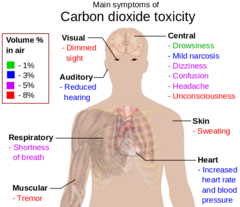Carbon Dioxide Calibration Gas
Carbon Dioxide Calibration Gases
Carbon Dioxide or CO2 is a very versatile substance and is the 4th most common gas that occurs naturally in Earth’s atmosphere. It is an odorless, colorless gas that has been reported to have a slight acidic taste. Carbon Dioxide is not flammable nor will it support combustion, in fact it is used in the manufacture of some fire extinguishers as a way to displace the oxygen and cool down the fuel. The Oxygen we breathe is converted into CO2 when we exhale, which contributes to the dangers of Carbon Dioxide in confined spaces. Although relatively harmless, CO2 displaces Oxygen and can cause asphyxiation when Oxygen levels reach below 17%. Typically, CO2 is not harmful in low concentrations, but when an environment becomes Oxygen deficient, it can become lethal.
Carbon Dioxide is normally stable and considered to be a NON-REACTIVE GAS with the exception of its reaction to heated magnesium.
Also Known As: Carbonic Acid Gas, Carbonic Anhydride, Carbonic Oxid, Carbon Oxide, Dry Ice (solid form)
Occupational Exposure Limits for Carbon Dioxide
The TLV or Threshold Limit Value for Carbon Dioxide is 0.5% or 5000ppm. This percentage represents the time weighted average that a worker may be exposed to CO2 during an 8-hour work day. This is where air monitoring devices become essential in ensuring health and safety of personnel by making certain that the Oxygen level remains above 19.5% and the CO2 level does not exceed the recommended TLV while in a confined space.
Health Effects/Symptoms Caused by CO2 Exposure
Carbon Dioxide (CO2) is an essential gas that is expelled by all living beings and is relatively not harmful as it is literally all around us at all times. Confined space workers are more at risk for Carbon Dioxide poisoning as confined spaces are sealed environments which will allow the buildup of CO2 and the decrease in O2 levels as breathing occurs. Minimum exposure is inevitable, but once concentration reaches high levels you may start to exhibit symptoms that are caused by an over abundance of Carbon Dioxide in your bloodstream, thereby quickly becoming life threatening.
Common Symptoms: Sleepiness, Headaches, Dizziness, Reduced Hearing, Loss of Attention/Confusion, Increased Heart Rate, Slight Nausea, Visual Disturbances, Sweating, Unconsciousness, Asphyxiation

Industrial Uses for Carbon Dioxide (CO2)
Carbon Dioxide is a very versatile and necessary gas to humans and in the manufacturing world. It is used in many industrial applications in both its solid and liquid form. Some industries that utilize Carbon Dioxide (CO2) include the metals industry, pharmaceutical industry, rubber and plastic industry, food and beverage industry, the health care industry, and more. Carbon Dioxide is that "fizz" you feel when you drink a soda. You may know of or may have even used dry ice, but did you know that dry ice is just Carbon Dioxide in a solid form?
Handling & Storage of Carbon Dioxide Calibration Gas Cylinders
Carbon Dioxide (CO2) is often a compressed liquefied gas whose contents are under pressure. In order to maintain a safe environment, all who work with calibration gas cylinders should obtain proper training beforehand. You want to handle Carbon Dioxide calibration gas cylinders with extreme caution, as dropping one or accidentally opening valves could lead to catastrophic consequences. As always, you want to ensure that you read your Material Safety Data Sheets to follow all specific manufacturer requirements pertaining to the calibration gases you work with.
Do's and Don'ts
- DO use gloves when handling cylinders
- DON'T handle cylinders with wet hands as it could cause the cylinder to slip and fall
- DO secure cylinders in an upright position
- DON'T store cylinders in direct sunlight or near other sources of heat
- DO use a suitable transportation device such as a cart or trolley
- DON'T travel with calibration gas cylinders in a vehicle without adequate ventilation
Considerations for Methods of Disposal of CO2 Calibration Cylinders
When looking into the proper disposal of calibration gas cylinders, there are a few things that you should consider to ensure the health and safety of fellow co-workers and the environment around you. For unused portions of any calibration gases, you should contact the supplier and/or manufacturer for recommendations or instructions for recycling or sending empty cylinders back to them. You want to consider the impact that the gas may have or the contamination that may occur if released due to improper disposal. These considerations include the toxicity of the gas, potential for explosions, and impact on air quality in general.
Detection of Carbon Dioxide in Confined Spaces
Detection of Carbon Dioxide (CO2) is most crucial in confined spaces, more specifically, in densely populated confined spaces. An NDIR sensor or non-dispersive infrared CO2 sensor is the standard CO2 sensor used in the industry for detection of this potentially harmful gas.

Author: ChéAna Morgan, Download the article here: https://egasdepot.com/content/Carbon Dioxide (CO2)-Calibration Gas.pdf
Carbon Dioxide Calibration Gas
EGas Depot offers a wide range of Carbon Dioxide Calibration Gases. With 13 different liter sizes and over 40 different options for your ppm and LEL requirements available to you, we are a one-stop shop for all of your field calibration needs.
